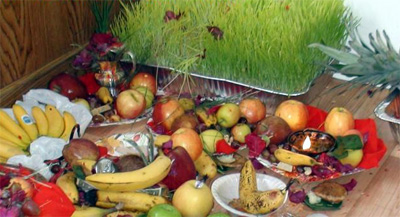Main Menu
Member Log In
Polls
Global Warming
Newsletter
Articles
Annapurna: Nepal's Commercialization Initiative For An Endangered Landscape
Posted by: J. A. Hendricks | Date: December 07, 2008
There have been many debates over the years surrounding the
commercialization of the world’s highest peaks. Mt. Everest is the
biggest example of mountain commercialization, where hundreds of
climbers a year flock to the world’s highest mountain, paying thousands
of dollars for a guided chance to reach the coveted summit. The recent
tragedy on K2 has sparked conversations of concern for it’s own
commercialism, after it was being reported that high-altitude porters
had been brought in for some of this years climbs.
Annapurna, while not as well-known to the outside world as Mt. Everest
or K2, is still a very important peak to high-altitude alpine climbing.
The peak rises 26, 538 ft., making it the 10th highest mountain in the
world. Along with the climbing, Annapurna also happens to be the focal
point for a 7,629 sq. km. conservation and protection initiative known
as the Annapurna Conservation Area Project.
The Annapurna Conservation Area Project helps to protect an area that
offers some of the finest trekking trails in the Himalayan region and
the world. These trails have become a world destination for many
venturers into the Himalayan region and offers a nice glimpse at the
natural wildlife and ecology of Nepal. This area is the largest
protected area in all of Nepal and has been looked upon as an area of
prestige and value to a country where income is hard to come by.
That could be changing in the very near future. Nepal has enacted plans
to commercialize the area known as the Annapurna circuit. The thought
is to capitalize on the area’s growing popularity with trekkers and
make it more tourist friendly.
These plans include a new road that will run from the small mountain
resort of Manang to Nepal’s national transportation network. Manang
happens to be the launching point for many of the guided treks in to
the Himalaya region and previously has only been reachable by a short
helicopter flight or by walking in. Further plans include golf courses,
adventure tourism projects and companies, as well as possible theme
parks and hotels.
Nepal’s new outlook on the Annapurna region, as a place to promote
tourism, has left many people concerned that the country’s financial
interests will drive tourists away, as well as harm the environment and
conservation projects that have been going on since 1986. The new road
leading in to region and the addition of more corporate based interests
could also deter travelers and trekkers from using the smaller shops
and businesses owned by local families who rely on this income to
survive.
Most of the locals in the area are against the building of the tourism
infrastructure. They fear that as more people come in to the region,
that any profits will be gobbled up by the big businesses and leave
them worse off than they currently are. The environmental impact of
commercialism is also a large topic.
Annapurna and the surrounding Annapurna Conservation Area Project helps
to protect many endangered wildlife and plants in the region. The
onslaught of cars and vehicles and even the road will hamper any prior
protection ordinances used to saving this region from human destruction
and allow more people in to the region who may not have the environment
at heart.
Commercialization of any area deemed ‘wild’ brings about many tough
decisions. Do you do what is best for money or do you do what is best
for the area? Nepal is a poor country. Many residents survive on $3 or
less a day with a yearly income of $3-400. Much of this money is
brought in by mountain tourism. Nepal is also a country that is deeply
in debt to other nations. They must rely upon a vast network of imports
in order to meet their own country’s needs. While the country may
profit from such commercialization, the nation’s residents will
probably not see an added advantage to these efforts.
Commercialization of some of the world’s most endangered landscapes is
definitely a topic for much debate. Either way you look at it, there
are benefits and problems associated with each option. As the world
continues to grow and countries try to capitalize by any means
necessary for survival, the environment and conservation of these areas
will be endangered.
(Www.usoutdoorstoday.com)
MORE:
- The Best Mountaineering Places in Nepal | August 31, 2013
- Everest Base Camp Trek: Hiking in the Land of Glorious Mountains | April 23, 2012
- Kathmandu Lukla Flights: Scenic Mountain flight | March 15, 2012
- Everest View Trek and Sherpa Village Tour | December 21, 2011
- Trekking in Nepal: Adventure that provides lifetime memory | August 19, 2011
- Everest Measurement: Will Nepal success in challenging task | July 25, 2011
- The Glory Of The Himalayas | March 30, 2011
- Hidden valleys of Beyul Kyimolong | January 24, 2011
- The transformation of tourism | January 23, 2011
- NTY: Old Wine In New Bottle? | January 23, 2011
- Sea of tranquillity | June 28, 2010
- One empty bag in the Himalayas | April 06, 2010
- Melting Himalayan glaciers threaten lives in Asia | December 07, 2009
- Scientists urge public not to miss Lulin Comet sighting | February 24, 2009
- Annapurna: Nepal's Commercialization Initiative For An Endangered Landscape | December 07, 2008
- Hopes of Nepalese tourism hinge on new leadership | August 31, 2008
- Beautiful Pas Gaun | August 20, 2008
- Greenest Time in Nepal | July 31, 2008
Advertisments
Nepal Himalayas Trekking Pvt Ltd
Nepal Himalayas Trekking (P) Ltd.
Bhagwan Bahal Thamel ( Near of Chhayadevi Complace ) Kathmandu, Nepal





Write Comment :